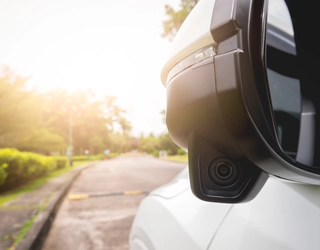
Ask the expert: Miniaturization - High density design
contact us


Miniaturization is a key global trend in the automotive industry. Here, Lenora Clark, Director, Autonomous Driving and Safety Technology at MacDermid Alpha Electronics Solutions, talks us through the impact it has had on recent designs and why the outlook is positive.
In the printed circuit board category, ‘miniaturization’ and ‘high density design’ have become interchangeable terms. High density designs have long been used in the automotive industry; they are often located in the central console, such as the infotainment centre. However, in the past there have been limited numbers of systems that required these designs.

Now, as we move towards safety critical applications and increased connectivity, we are seeing a rising demand for high processing power and speed.
For example, the capability to recognize the conditions around the vehicle and relay the information back to the user. In this situation, even a fraction of a second is important to alert the driver.
As the number of vehicles that use autonomous technology increases, it is therefore likely that we will see a growing number of high-density designs being developed in the future.
We cannot continue to increase the function and content of a vehicle on a large-scale using electronics, without seeing cars become too big and heavy. From a manufacturing point of view, it would also create excess waste, carrying environmental concerns.
Larger vehicles are generally less efficient and more expensive to power – an issue that would be passed on to the consumer. This would also affect electric vehicles (EVs), as much more power would be needed to propel a larger car. Miniaturization is therefore key to enabling fast paced technology without adding to weight issues.
In addition, the growing need for increased speed and processing power is making miniaturization a necessity. The amount of electrical information that modern vehicles must now process is huge, and it is impossible for an electrical current to travel along such long pathways, as it would potentially increase the risk of accidents.
The automotive industry has certainly been taking design inspiration from consumer applications, such as cameras and mobile phones. However, this can present a fresh set of challenges. The camera must function for extended periods of time compared to a smartphone. It must also function under extreme conditions like heat and vibrations. This means the materials for automotive applications must be adapted to ensure reliability for a safety critical application.

Gaming is one sector from which the automotive industry draws its inspiration. Packaging once used solely for gaming is now a critical component for the video processing required in advanced safety systems. In addition, the latest designs for radar sensors originated in military applications and are increasingly being used in today’s cars.
We are likely to see a growing influx of consumer technology in vehicles – and this is not showing any signs of slowing down. The automotive industry is currently experiencing a huge period of innovation; it is likely that future designs will be almost unrecognizable.
Achieving reliability in miniaturization presents a greater challenge for the automotive industry. As electronics are made smaller, tolerances become more critical, such as the spacing between features.
In general, smaller designs must be able to withstand more physical pressure than traditional designs, which creates issues for manufacturers. Plus, high density designs in vehicles are expected to have a longer lifespan than consumer products. While phones may only last three years, cars are expected to be functional for longer, alongside other external factors, such as heat and vibrations.
In addition, there is also a challenge in ensuring all the electrical components in a car work together in harmony. The vehicle architecture needs to be a significant consideration for OEMs and Tier 1s, as it is a continually evolving system that must be adjusted to suit different electronic configurations.
At MacDermid Alpha Electronics Solutions, we have extensive experience and knowledge in electronics, across a wide range of industries, such as aerospace, consumer electronics and communications. We have long supported growth in miniaturization in these applications, and we can translate this success in the automotive sector – helping guide and advise OEMs and Tier 1s.
For more information on our high-density design offering in the automotive industry, please contact info@esiauto.com